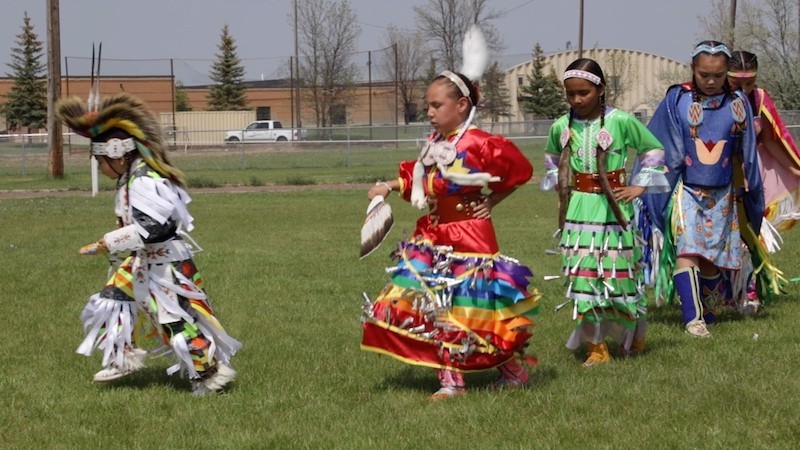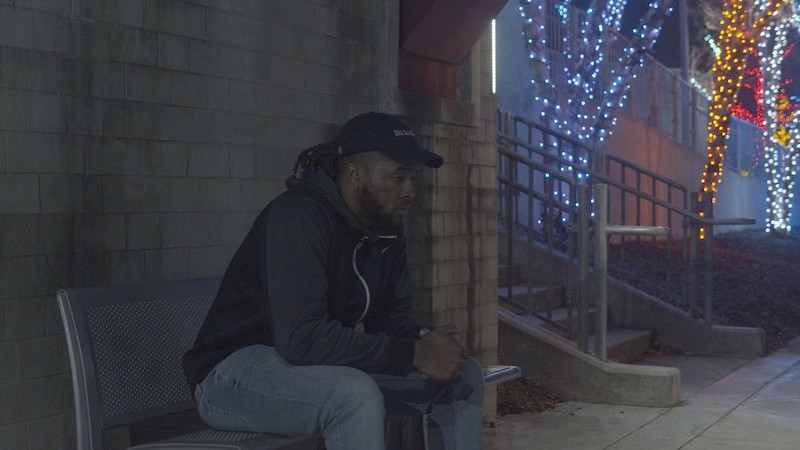FutureWave: Connection Across Time and Space
Review of FutureWave, presented by SIFF
Written by Teen Writer Lark Keteyian and edited by Teen Editor Eleanor Cenname

As much as I enjoy seeing my peers' work showcased and celebrated, I'm often hesitant about grouping artists together just by their age because it suggests that young artists are all telling related stories. But in the case of SIFF's FutureWave series—seventy-five minutes of short films from artists under the age of eighteen—this categorization allowed me to approach the festival with a different critical eye than I would have applied to films by young artists mixed in with films by artists with more experience. I spend most of my time around young artists, and I've noticed that while our art is as compelling as art by adults, the work put into it is more visible because we’re often still sorting out how we want to tell our stories. The moments where this effort was present in the work of the young artists showcased at FutureWave were just as compelling for me as the moments that broke outside of their form and context to deliver beautiful, emotionally impactful scenes.
"Sparring", directed by Victor Xia, tells a stylized story about two relationships: the fractured, abusive one between a boy and his father, and the healing friendship between the boy and his friend. Both are built around cyclical violence, moving from the shock of the father hitting his son to an exceptionally beautiful scene that I will be thinking about for months to come: the boy boxing with his friend in slow-motion, the close shots moving with the boys' bodies, Simon Kwan's original score creating an intimate atmosphere out of the physical space between the actors. Xia is also a poet, and it shows—this three-minute film is concise and impactful, only using the shots it absolutely needs to get its deep and complex feelings across.

Like "Sparring", "Looking Forward From Yesterday" creates a compelling, hushed atmosphere contained in ten minutes of film. The long shots of empty Montana country and measured voices of elders and students in Native communities in and around Harlem High School work in the same way as a teacher who speaks quietly so students have to lean forward to listen—the viewer is completely engaged in these speakers' stories. The lasting impact of this film lies in its connection between generations; educators and artists speak both about their duty to help young people engage with their communities and the younger generation's duty to keep their cultures alive.
"In Time" is a silent ghost story told in a series of sepia-filtered images. It uses a language of imagery that is familiar to most of its viewers: the tops of trees from below, a tea kettle, a cluttered kitchen. The protagonist moves through the world, their world, their house, their yard, the street, with no clear direction, coming in and out of contact with a mysterious figure who might be the ghost of a relation of the protagonist's. This figure continues the shared language of imagery by echoing the classic ghost Halloween costume—a shiny sheet draped over a person's head. Because of this familiar image, the figure, while a little bit spooky, feels like a regular part of life, reading a book and sitting at the table with the protagonist. These characters share a comfortable, silent connection, across time and physical space.

"Socially Distant" is another story of connection between friends across place and time. It's a story about friendship and the inherent awkwardness of being alive, featuring clean, dusky shots of fields in Texas, a lo-fi remix of “Rainbow Connection”, and endearingly awkward performances from the film's two actors—slightly flat, with long spaces between lines of highly realistic dialogue. The story is driven by plot points. As one friend finds out the other is moving to Houston for work, both are concerned that they might lose each other, but the important emotional arcs happen in the quiet moments; it captures the feeling of not being able to remember what you said to a friend in a conversation, only how it felt, and the love and connection that can happen between two people sitting on a bench together, not talking, just being with each other. The two main characters spend time in dark cars and empty fields and lonely benches; there is a simultaneous feeling of Texas lonesomeness and a deep intimacy between two friends who feel like the only people in the world.
In four different and interrelated ways, these films provide the viewer with a reminder that connection between people, no matter how ordinary it is, lifts us up as we move into the future.
FutureWave presented by SIFF was available to stream from April 8 to 18 2021. For more information see here.
Lead photo credit: "Sparring". Victor Xia. Courtesy of SIFF.
The TeenTix Newsroom is a group of teen writers led by the Teen Editorial Staff. For each review, Newsroom writers work individually with a teen editor to polish their writing for publication. The Teen Editorial Staff is made up of 6 teens who curate the review portion of the TeenTix blog. More information about the Teen Editorial Staff can be found HERE.
The TeenTix Press Corps promotes critical thinking, communication, and information literacy through criticism and journalism practice for teens. For more information about the Press Corps program see HERE.

